
views
X
Trustworthy Source
Mayo Clinic
Educational website from one of the world's leading hospitals
Go to source
Work with your therapist to develop strategies for changing your thought and behavior patterns. Taking medications and making simple lifestyle changes can also help ease the symptoms that lead to ritual behaviors.
- Work with your therapist and doctor to identify triggers and develop productive coping mechanisms that will help you avoid problematic rituals.
- Exposure and response prevention (ERP) is the main therapeutic treatment for OCD, and it involves repeatedly exposing yourself to whatever triggers your OCD and learning how to ignore the ritual.
- In the moment, try challenging whatever thoughts you have that are tempting you to act out the ritual, and if you can’t talk yourself out of it, distract yourself.
- Never feel bad about completing an OCD ritual; it’s no different than someone with a skin condition itching their skin, and it isn’t a sign of weakness or failure.
- Medication can be extremely helpful for a lot of people with OCD, but you may not need it if your rituals aren’t drastically interfering with your daily life and ERP alone is enough.
Modifying Your Behavior
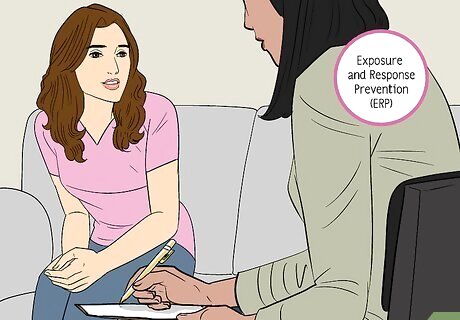
See a therapist who practices exposure and response prevention (ERP). ERP is a type of cognitive behavioral therapy that is especially effective for treating OCD rituals. Ask your doctor or therapist to recommend a counselor who has experience doing ERP therapy. While this can be a frightening or uncomfortable process, your therapist will help guide you through it in a safe and supportive way.
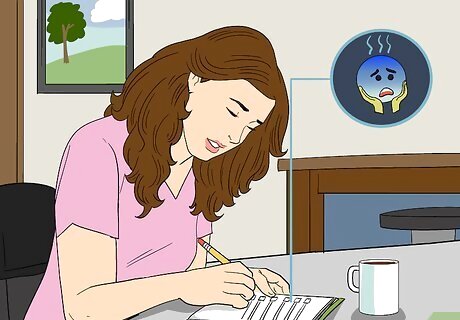
Identify your major obsessive fears and triggers. Before you can start working on overcoming your OCD rituals, you need to identify the thoughts or fears behind them. Think about the specific thoughts or situations that tend to trigger your rituals and write them down. Include details such as how much fear or anxiety each situation or thought causes and what ritual you perform to relieve your fear. For example, you might write, “I worry that someone might get into my car when it’s parked on the street, so I always press the door lock button 10 times to make sure it’s locked. On a scale of 0-10, I rate my anxiety about this at 3.”
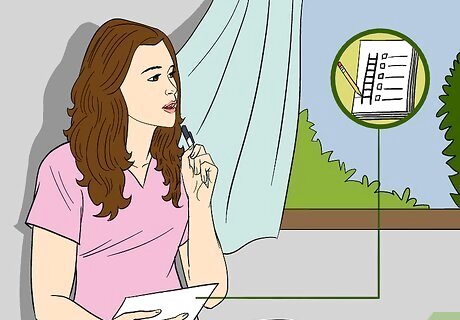
List your obsessive fears from smallest to biggest. Once you’ve identified the main triggers for your OCD rituals, write a list ranking them by how much fear or anxiety they cause you, from mildest to most severe. This is called a “fear ladder.” You can use your ladder to set goals for yourself as you work on overcoming each ritual. For example, forgetting to turn off the bathroom light might be at the bottom of your fear ladder, while flying on an airplane might be at the top.
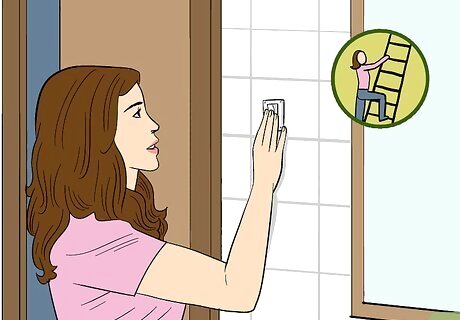
Set a goal for each step on your fear ladder. Consider the ritual that accompanies each fear or trigger and set a corresponding goal. As you work your way up the ladder, you will work on achieving increasingly larger or more difficult goals associated with your more severe obsessive fears or triggers. For example, if you’re afraid of leaving the bathroom light on, your goal might be to switch off the light and then leave the house without coming back to check that it’s turned off. Eventually, you will work your way up to larger goals, such as going on a long airplane flight without performing any movement or touching rituals to calm yourself.
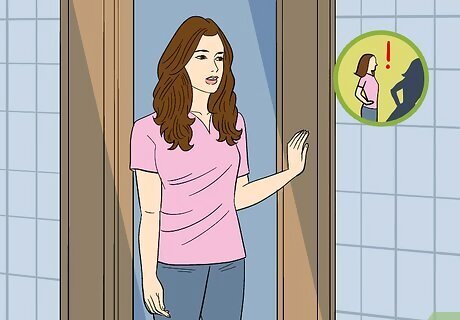
Expose yourself to each trigger on your list, smallest first. This will probably be uncomfortable or scary at first, but it’s a crucial part of learning to control your OCD rituals. Starting with the triggers that cause the smallest amount of fear or anxiety, intentionally put yourself in a situation where you normally feel the need to perform a ritual. Enter the situation with the intention of resisting your usual ritual. For example, walk into the bathroom and turn off the light, then walk out again.
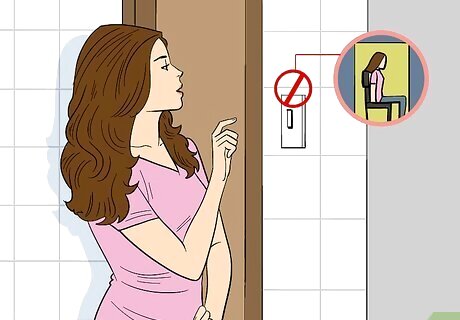
Resist the urge to perform your usual ritual as you confront each trigger. You may feel an overwhelming urge to carry out the ritual, but tell yourself you are not allowed to do it. Sit down and breathe deeply while you wait for the urge to pass. For instance, if you normally walk in and out of the bathroom 5 times to make sure the light is off, go into another room and sit down instead.
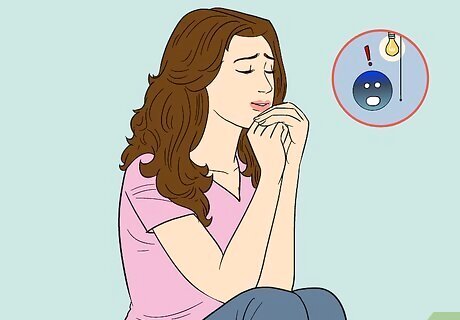
Focus on your feelings without judgment as you resist the ritual. As you’re resisting, don’t try to ignore your feelings or distract yourself from them. Instead, make note of each feeling and allow yourself to feel it without trying to change or criticize it. For example, you might say to yourself, “I remember turning the light off, but I still feel worried that I left it on. I feel anxious and irritable, and my shoulders are really tense.” Eventually, your feelings of anxiety should diminish. The urge to perform the ritual will pass as you fully internalize the idea that nothing catastrophic will happen if you don’t do it. This will help you learn to stop associating those fearful or anxious feelings with each trigger.
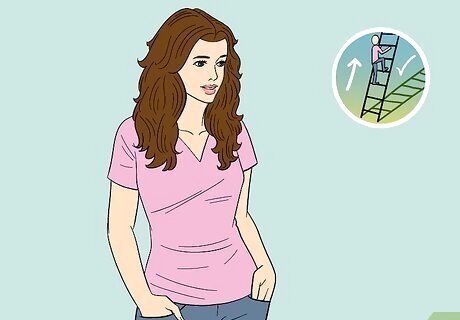
Master each ritual before moving on to the next. It will take time and practice to overcome each ritual on your list, but it’s important to pace yourself and tackle them one at a time. Practice resisting each ritual until you can comfortably do so, then move up to the next item on your ladder.Tip: If you find any one goal too overwhelming or challenging, try breaking it up into smaller, more manageable steps. For example, if you normally have to spend 15 minutes washing your hands after using the bathroom, try cutting it down to 10 minutes, then 5, and eventually just the recommended 20-30 seconds.
Treating Your OCD with Medication
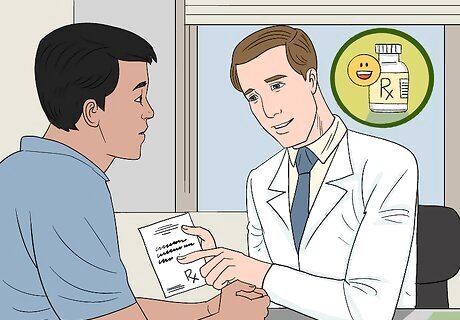
Ask your doctor about trying antidepressants. Antidepressant medications, such as SSRIs (selective serotonin reuptake inhibitors) and tricyclic antidepressants, can help control the obsessive thoughts that lead to ritual behaviors in OCD. If behavioral therapy alone isn’t enough to help you overcome your rituals, talk to your doctor or a psychiatrist about trying one of these medications. Common SSRIs used to treat OCD include fluoxetine (Prozac), fluvoxamine (Luvox), paroxetine (Paxil), and sertraline (Zoloft). Clomipramine (Anafranil) is a tricyclic antidepressant that is often used to treat OCD. It may take 10-12 weeks before you begin noticing an improvement in your symptoms while taking these medications, so don’t be discouraged if you don’t feel a difference right away.
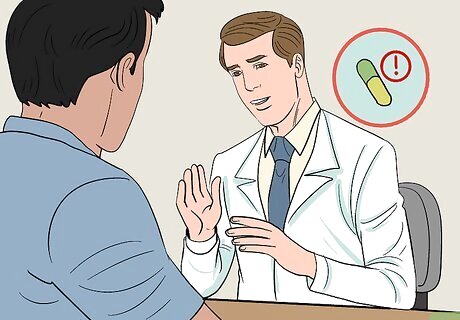
Discuss the possible risks and side effects of each medication. While most medications used to treat OCD are relatively safe, there are some risks. Talk to your doctor about your health history and discuss whether these medications are likely to be safe or effective for you.Warning: Some antidepressants can cause suicidal thoughts, especially in children and teens. If you have thoughts of suicide or self-harm while taking one of these medications, call emergency services or notify your doctor or therapist immediately. If you live in the U.S., you can also call the National Suicide Prevention Lifeline at 1-800-273-8255. Some of these medications are not safe for teens or children under a certain age. Before taking any medication, let your doctor know if you are pregnant, breastfeeding, or planning to become pregnant. Common side effects of antidepressants include headaches, nausea, difficulty sleeping, and changes in your sex drive. Many of these symptoms can improve over time or if you adjust the dose of your medication.

Consult your doctor before starting new medications or supplements. Antidepressants can interact with other medications or supplements or cause them to be less effective. If you take antidepressants for your OCD, talk to your doctor before starting any other new medications to make sure that it’s safe. Likewise, before you start taking an antidepressant, give your doctor a full list of any other medications you currently take, including over-the-counter medications, prescription drugs, and vitamins or supplements.

Talk to your doctor about adjusting your dose if necessary. It can take some time and trial and error to find the right medication and dosage to treat your OCD. If you don’t feel like your medication is working well for you, talk to your doctor. They can adjust your dose or help you switch to a new medication if necessary. Never stop taking an antidepressant or try to adjust the dose on your own. Doing so can cause dangerous side effects or withdrawal symptoms. Your doctor can tell you how to make adjustments or taper off your medication safely.
Making Lifestyle Changes
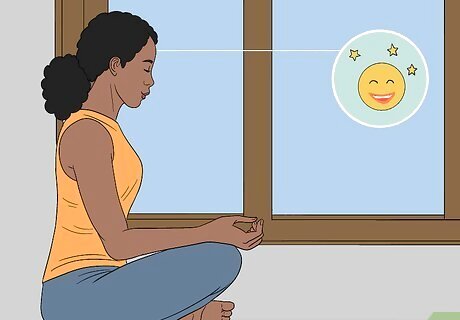
Practice stress-relieving activities to ease your symptoms. Stress can make your symptoms worse, so it’s important to develop good stress-reduction skills while you’re trying to overcome OCD rituals. If you’re starting to feel tense or anxious, do things that help you feel calm and relaxed, such as: Meditation, yoga, or deep breathing exercises Progressive muscle relaxation Spending time with friends and family Listening to peaceful music Taking a warm bath or shower Going for a walk Reading or watching movies Working on hobbies or creative projects
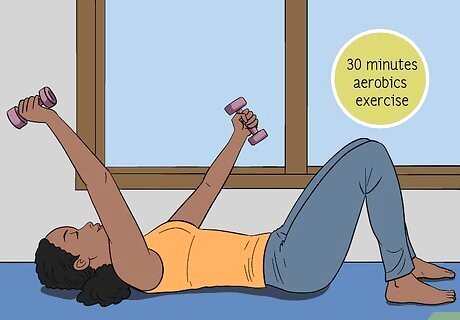
Exercise regularly to help refocus your thoughts. Exercise is a natural mood booster, and it can also help you clear your mind when you’re obsessing. Try to get at least 30 minutes of aerobic exercise on most days. If you don’t have time to do your exercise all in one stretch, try breaking it down into multiple 10-minute sessions. As you exercise, be mindful of the movements you are doing and the sensations in your body. This can help take your focus away from your anxieties or obsessions.
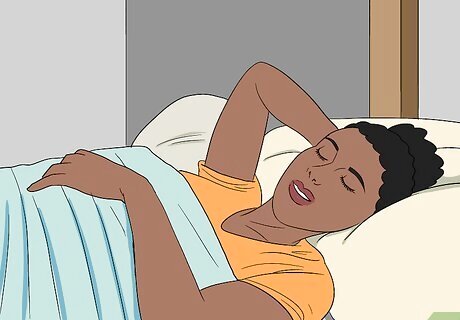
Get plenty of good-quality sleep to help keep your mood stable. People with OCD often have trouble getting enough sleep, which can make it harder to regulate your mood and resist ritual behaviors. To make sure you get the rest you need, plan to go to bed early enough each night so that you can get at least 7-9 hours of sleep (or 8-10 if you’re a teen).Did you know? Studies show that people with OCD who are night owls as opposed to morning people tend to experience more symptoms of anxiety, depression, and irritability. If possible, avoid staying up late or doing too many activities late at night so that you can feel well-rested and alert in the morning. If you have trouble falling asleep at night, try establishing a calming bedtime routine. For example, you might take a warm bath, do some light stretches, or read for half an hour before bed. Since light from screens can disrupt your sleep patterns, try to stay away from phones, tablets, computers, or TV screens for at least half an hour before bedtime. Keep your room comfortable, dark, and quiet at night to help you get the best possible sleep.

Avoid nicotine, alcohol, and other mood-altering drugs. It can be tempting to take a drink or reach for a cigarette if you’re feeling anxious or tense, but doing so can make your symptoms worse. If you’re dependent on alcohol or nicotine, talk to your doctor about the best way to cut back or quit. In general, it is best to avoid stimulants, since they can make feelings of fear or anxiety worse. However, there’s some evidence that caffeine can actually help reduce OCD symptoms, so don’t be afraid to have a cup of coffee in the morning! Although some studies support the use of caffeine for OCD more research needs to be done to determine whether it is effective. Researchers are currently studying the effects of marijuana on OCD. While some people claim that marijuana can help improve the symptoms of OCD, others find that it worsens their symptoms.




















Comments
0 comment